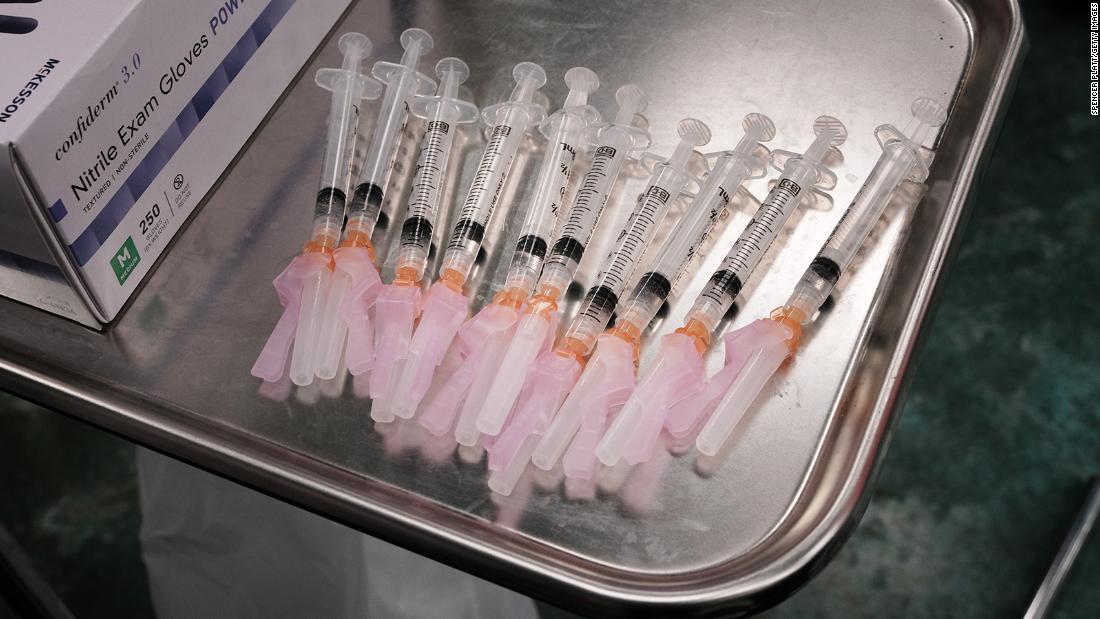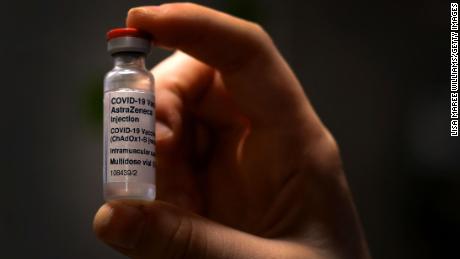CDC pushes vaccinations for younger people
“I think we can confidently say the worst is behind us,” the Dean of Brown University School of Public Health Dr. Ashish Jha said Friday on “Good Morning America.” “We will not see the kinds of sufferings and death that we have seen over the holidays. I think we are in a much better shape heading forward.”
The only thing that could threaten the outlook, he said, was the spread of coronavirus variants, making the push to increase vaccinations even more critical.
Based on the most current estimates, about 80% of the US population is currently eligible for a coronavirus vaccine based on their ages. Making people between the ages of 12 and 15 eligible would open vaccinations to another 5%, pushing the country closer to herd immunity.
CDC stresses routine vaccinations for adolescents
But adolescents are also missing out on routine vaccines, according to CDC Director Dr. Rochelle Walensky, who said during an event for the Pediatric Academic Societies that such immunizations are down this year.
And with the need for routine immunizations for kids returning to school, the rollout of the annual flu vaccine and the anticipated availability of Covid-19 vaccines for children 12 and older may present a logistical challenge.
“It’s going to take a truly coordinated effort among families, health care providers and public health officials at local, state and federal levels to achieve both the rollout of Covid-19 vaccine in adolescents and a rapid catch up of routine vaccinations,” Walensky said.
The CDC recommends against administering other vaccines within 14 days of a Covid-19 vaccine, so giving all the vaccines at once isn’t an option.
“This means a period of up to eight weeks when an adolescent may be ineligible to receive recommended routine vaccinations,” Walensky said.
“School located vaccination programs could augment adolescent vaccination coverage, both at mass vaccination sites prior to the start of school and as catchup campaigns in the fall,” she noted, calling on pediatricians to aid the effort.
“To achieve high vaccination coverage rates and reduce Covid-19 transmission, we need rapid and extensive vaccination of children under the age of 18,” she said.
The vaccine by Pfizer/BioNTech has received emergency use authorization for people 16 and older, while those by Moderna and Johnson & Johnson are authorized for people 18 and older.
Pfizer has submitted for an amendment to its vaccine’s emergency use authorization by the Food and Drug Administration to extend authorization to people ages 12 to 15, while Moderna says it expects its vaccine to be authorized for people 12 and older this summer.
Pfizer and Moderna are also studying their vaccines in children as young as 6 months.
Model’s projected deaths decrease
About 598,882 Americans will have died from coronavirus by August 1, according to the latest projection from Institute for Health Metrics and Evaluation (IHME) at the University of Washington.
“Daily cases and deaths continue to decline, signaling that despite widespread circulation of B.1.1.7, the combination of increasing vaccination and declining seasonality is driving a decline in the epidemic,” the IHME team said.
A lower death rate and higher vaccination rate would make it reasonable to target a full reopening by July 1, Walensky said Friday.
“We are focused on getting people vaccinated, decreasing the case rates,” she said in a White House Covid-19 news briefing. “If we can continue at this pace, case rates are coming down, vaccinations going up, then I think July 1 would be a reasonable target.”
But, she cautioned, “the virus has tricked us before,” and it will be crucial to keep an eye on cases in the coming months.
Getting younger people vaccinated is becoming more important as more older people become inoculated and reported infections skew younger.
In West Virginia, the median age for new cases is currently 34 years old, Gov. Jim Justice announced. That is down 10 years from a few months ago.
“The average age of somebody infected with Covid-19 has really reduced over the past several months,” said the state’s coronavirus czar Dr. Clay Marsh, who said the 10- to 19-year-old category is the state’s “largest for the positivity rates and spread of Covid-19.”
Justice said the two biggest concerns with young people getting infected is transmitting the virus to others “even if you don’t get sick” and the possibility of ending up with “significant side effects… [for] the rest of your life.”
“I’m telling our young people out there, I’m telling you as point blank as I can tell you, that you absolutely should have a valid concern,” said Justice, urging young West Virginians to get vaccinated.
Most J&J vaccine side effects are not serious
Rare reports of blood clots had sparked concern over the Johnson & Johnson single-dose vaccine, but a new review of the safety data found that only 3% of reported reactions after receiving the vaccine are classified as serious.
The report noted that the safety profile of the vaccine so far has been similar to what was seen in clinical trials, but safety monitoring during the vaccine’s rollout quickly identified the blood clot incidents.
“A rare but serious adverse event occurring primarily in women, blood clots in large vessels accompanied by a low platelet count, was rapidly detected by the U.S. vaccine safety monitoring system,” CDC researchers wrote in the report. “Monitoring for common and rare adverse events after receipt of all COVID-19 vaccines, including the Janssen COVID-19 vaccine, is continuing.”
The data included 88 deaths reported after vaccination. Among those deaths, three occurred in patients with cerebral venous sinus thrombosis and CDC researchers wrote that, after preliminary reviews, “no other deaths appear to have an association with vaccination.”
CNN’s Jen Christensen, Virginia Langmaid, Lauren Mascarenhas, Melissa Alonso and Jacqueline Howard contributed to this report.
![]()








